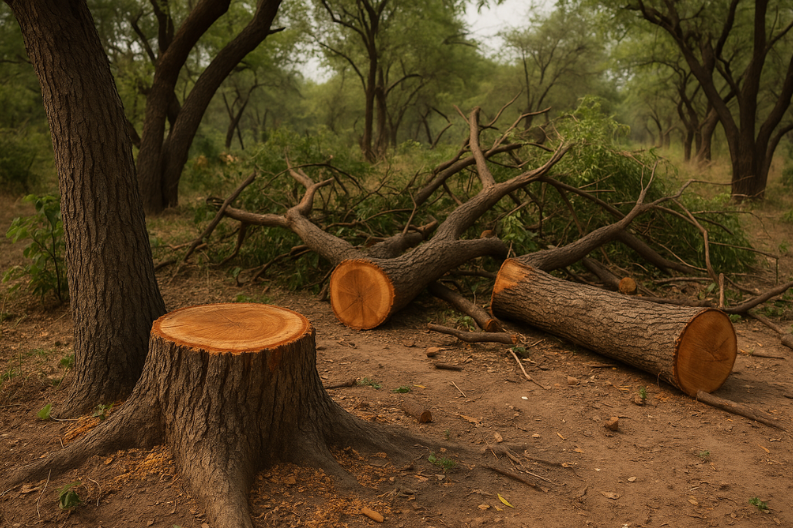Environmental activists are raising alarms over large-scale tree cutting in Faridabad’s protected Aravalli region, an area recognized as a “deemed forest” by the National Green Tribunal (NGT) in March 2019. The incident has sparked outrage among local and national groups concerned about the future of the fragile ecosystem.
On August 30, 2025, Lt. Col. Sarvadaman Singh Oberoi (retd), who was instrumental in securing NGT’s ruling on this land, reported mass deforestation in Sarai Khwaja village to the Divisional Forest Officer (DFO). He described the activity as a “concerted effort” to clear trees in violation of NGT orders. Photos and videos submitted with his complaint carried time, date, and GPS details, underscoring the gravity of the situation.
The timing of the cutting has raised suspicions, coming soon after the Haryana government introduced a new definition of forest. Under the revised rules, only areas with a minimum canopy density of 40 percent qualify, with further criteria on land size and exclusions for agroforestry and orchards. Environmentalists warn this could strip many Aravalli tracts of protection.
Faridabad DFO Surender Dhangi confirmed receiving Oberoi’s complaint and said a team was dispatched to stop further clearing. Officials, however, have yet to clarify who authorized the cutting.
The controversy centers on a 52-acre tract that the NGT declared a “deemed forest” in 2019, halting real estate projects in the area. The order followed legal battles over Haryana’s approval for Bharti Land Limited to cut more than 7,000 trees in 2017. The state later challenged the NGT ruling in the Supreme Court, arguing the land was not officially recorded as forest, a claim the tribunal rejected. The case has only had one hearing so far, with the next set for September 17, 2025.
Environmentalists stress the broader stakes. The Aravallis, among the oldest mountain ranges in India, are vital for biodiversity, air quality, and climate regulation. Cutting down trees here risks worsening pollution, eroding soil, and displacing wildlife. Local communities that depend on these forests also face threats to their livelihoods.
Citizen groups and activists remain at the forefront of monitoring such violations, often using social media to expose illegal cutting and rally support. For many in Punjab and Haryana, protecting the environment has become a collective mission.
The Faridabad tree cutting case illustrates the tension between development and conservation at a time when legal definitions are shifting. Activists argue that only vigilant communities and strong legal protections can safeguard the Aravallis for future generations.



